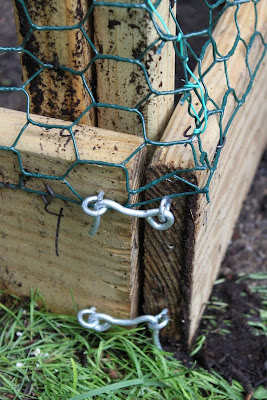It's been two weeks since we returned from vacation in Canada, and I can't stop thinking about it. Even though I've since joined my parents for a weekend in upstate New York. Even though Josh and I have entertained and seen friends and gotten thoroughly back into the Providence swing of things. Even though school starts soon (gah!). There's just something about vacation that grabs you tight and doesn't let go.
This year's visit, more than anything, was defined by blueberries. Blueberry bushes run wild over the island, bordering paths and leading into the woods. If we're making pancakes for breakfast, my mom will often step outside to pick a handful of berries from the bushes behind the cabin. We usually go blueberry picking at least once on vacation, hoping to put the produce towards a fresh pie. If we're lucky, we'll pick enough so we don't have to supplement with "store-bought," a phrase that gives my grandfather heart palpitations when we're up at the island.
No such worries this year. My sister, Josh and I picked enough for a pie just from the bushes outside the cabin. Venturing farther afield, the whole family picked enough for a double portion of blueberry cobbler. Then we had berry muffins. Then we picked enough for another pie. We ate blueberry pancakes three times during our two-week visit. And we certainly left enough for the next visitors.
Needless to say, we had a bumper crop.
There's something so peaceful and zen-like about picking blueberries. Cup or pail in hand, you can hike as little or as far as you want until you find a good patch. The best berries are fat and round, like little blue stars, and if you brush them with your fingers they fall right into your hand (or onto the ground, as so often happens). It's easy to work longer than you're expecting; each time you pause or talk about heading back, you'll spy the perfect bush a few feet to the right. "Just one more," you'll think, reaching for the fruit. Sometimes you might mistake a dark huckleberry for a blue, but that doesn't matter, since they're both edible, and you're on vacation, and who's really counting?
 |
| blueberries (L) and huckleberries (R) |
These muffins are one of the better ways to consume a cupful of fresh blueberries, should you find your lucky self in possession of some. Light and barely sweet, tasting of milk and butter, muffins are a great vehicle for fresh fruit. Especially when you've tried out all the other ways to eat blueberries.
Blueberry Muffins
(adapted from The Boston Cooking-School Cook Book by Fannie Merritt Farmer, 1930)
2 cups all-purpose flour
4 tsp baking powder
1/2 tsp salt
2 tbsp sugar
1 cup milk
2 tbsp melted butter
1 egg
1 cup blueberries, picked over and rinsed
Preheat the oven to 400 F. Line a muffin tin with liners, or brush with oil or butter. In a large bowl, combine the flour, baking powder, salt, and sugar, and whisk to mix. In a separate, medium bowl, combine the milk, butter, and egg. Don't worry if the butter clumps when you add it.
Quickly add the wet ingredients to the dry and stir a few times. Before it's fully incorporated, fold in the berries. Stir a few more times until just combined. Drop the batter into the prepared tins and bake at 400 F for 25 minutes, or until golden brown.


























